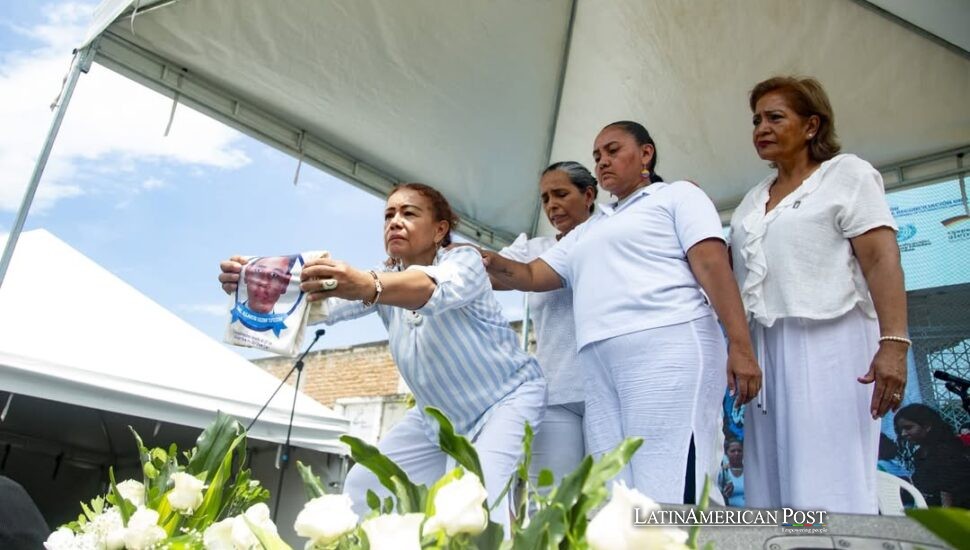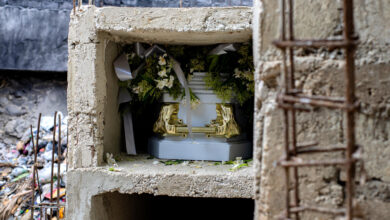In a Colombian Cemetery, Former Enemies Unearth the Bones of Peace

In Palmira, Colombia, former guerrillas and soldiers now dig side by side—not to bury the past, but to exhume it. Together, they’re restoring a cemetery once forgotten, turning grief into ritual, and transforming remorse into the slow labor of reconciliation.
A Repair Begins Among the Dead
The corner of the cemetery had no name—just dust, broken ground, and whispers of the disappeared. For decades, it was where the forgotten went. No plaques. No prayers. Just numbers. However, for the past year, it has been something entirely different.
Former FARC commanders and retired Colombian soldiers have worked shoulder to shoulder in this once-abandoned patch of Palmira, a city long scarred by the country’s internal war. They came not as combatants but as custodians. Together, they exhumed remains, whitewashed walls, raised ossuaries, planted flowers, and built a small chapel from scratch. The dead, they said, deserved dignity. And so did the living.
It’s the first reparation project of its kind under Colombia’s 2016 peace accord, a fragile experiment in justice through labor. “This is a lesson for the country,” said Marcela Rodríguez of Colombia’s Search Unit for the Disappeared, as former fighters handed the site back to the community, according to AP. “To insist that peace is possible.”
In a place where blood once soaked the earth, shovels now turn it gently. The work is physical, but the meaning is spiritual: building peace with the same hands that once broke it.
Former Enemies, Shared Tools, Unvarnished Truths
The project didn’t just recover bones—it forced former enemies to face each other, and themselves.
Retired army sergeant Fabián Durango joined the military at 15. He spent years in counterinsurgency, rising through the ranks of elite forces. Now, he’s implicated in the country’s infamous “false positives” scandal, where civilians were murdered and presented as combat kills to boost battlefield stats. But Durango does not flinch.
“We’re here to try and mitigate the evil we did,” he told AP. “The pain of their mothers has no reparation.”
Nearby, ex-FARC commander Leonel Páez—who joined the rebels at 17—echoed the sense of reckoning. He faces possible charges, too, tied to kidnappings, local crimes, and recruiting children. But here in the cemetery, labels blurred.
“We became friends,” Páez said. “We didn’t look at each other differently because you were a soldier or a rebel. Destiny put us against each other.”
Their worksite became a truth commission without microphones. There were no rehearsed apologies, no press events. Just sweat, silence, and the slow collapse of walls built during war.
And when victims’ families arrived, there was no hiding. The men stood face to face with mothers, like Judith Casallas, whose daughter Mary Johanna vanished in 2007. “It was useful to communicate to them where my daughter disappeared,” Casallas told AP. Some ex-combatants promised to ask around. It wasn’t closure, but it was something. “The day I get my daughter’s remains,” she said, “I will believe she’s gone.”
Families Search, Names Return, Grief Finds Ritual
Colombia’s wounds are staggering. More than 450,000 people were killed in its six-decade conflict. Over 132,000 remain officially disappeared. According to state estimates, up to 60% of them may lie in cemeteries like this one—buried without names, ceremonies, or goodbyes.
Palmira’s forgotten corner is now part of a national excavation. So far, 72 bodies have been recovered from this plot. DNA samples are being matched against a vast database of families still searching for their relatives.
However, for some, the search has come to an end.
In a ceremony this year, 19-year-old Wilson Losada Borrero became the first to be returned to the new ossuaries. His remains had vanished since 2002. Now, beneath the image of a dove and a plaque with his name, his mother, Maricela, wept—not just for what was lost, but for what was finally found.
“Today I thank God that I have him,” she said to AP. “Even if it’s his bones.”
She turned to the other mothers in attendance with a message only someone like her could give: “Don’t lose hope.”
Nearby, Judith Casallas kept her vigil. Her daughter’s Christmas gifts—eighteen unopened boxes—still sit stacked in her home. They are silent testimonies to love, rage, and the unbearable waiting.

IG@reencuentrosch
From Forgotten Corner to Modest Blueprint for Peace
Since 1982, at least 600 unidentified people have been buried in Palmira’s “forgotten corner.” The rebuilt site doesn’t try to grandstand. It’s humble. Purposeful. Ossuaries offer each set of remains a space. A mural brightens the wall with color and memory. The chapel stands ready for whispered prayers.
This is not a monument to peace. It is peace, slowly, physically, and painfully constructed.
The transitional justice courts will ultimately weigh how much this matters—whether work like this lightens the sentences of men like Durango or Páez. But its impact is already evident. Former killers now mix cement for victims’ names. Guerrillas now preserve the bones of those who once disappeared. And the families who had nothing—not even certainty—now have something to stand beside.
The peace process in Colombia is long, imperfect, and often fraught. But in Palmira, it has a face. It looks like a trench. A flower. A plaque. A handshake between men who once hunted each other in the hills. And it sounds like the quiet rustle of a name being carved in stone.
Also Read: Dominican Reality Show Breaks the Internet by Letting Fans Rule
“We can do it,” Rodríguez told AP. “With small actions and concrete works.”
In a nation where absence is the most enduring legacy of war, Palmira proves that presence—of names, of remains, of shared remorse—can still grow. Not to erase the pain. But to give it shape. And maybe, eventually, a place to rest.

